The big talking point after the Spanish Grand Prix has to be: where have Mercedes found all that pace from?
While it’s true that this was their fifth consecutive one-two, their performance advantage over the rest of the field – as measured in qualifying – was bigger than at any of the four previous races.
Almost every car featured some sort of aero upgrade for this race, but that of the Mercedes W10 appeared to be particularly effective. However, when looking at variations in the competitive hierarchy from race to race, the other key determining factor can be how well a particular circuit suits – or doesn’t suit – a particular set of car traits. It may just be that the W10 was particularly well-suited to the demands of the Circuit de Barcelona-Catalunya. On the other hand, it may be that the aero upgrades – centering around a heavily revised barge board arrangement and an associated smaller tweak to the front wing – were simply devastatingly effective.
READ MORE: TRACKSIDE PERFORMANCE ANALYSIS – Comparing the teams through Barcelona’s Turns 1 to 3
Every team apart from Haas qualified further away from Mercedes at Barcelona than at any other race of the season (and the Haas anomaly is only because it had such serious tyre temperature issues in Baku), as shown below.
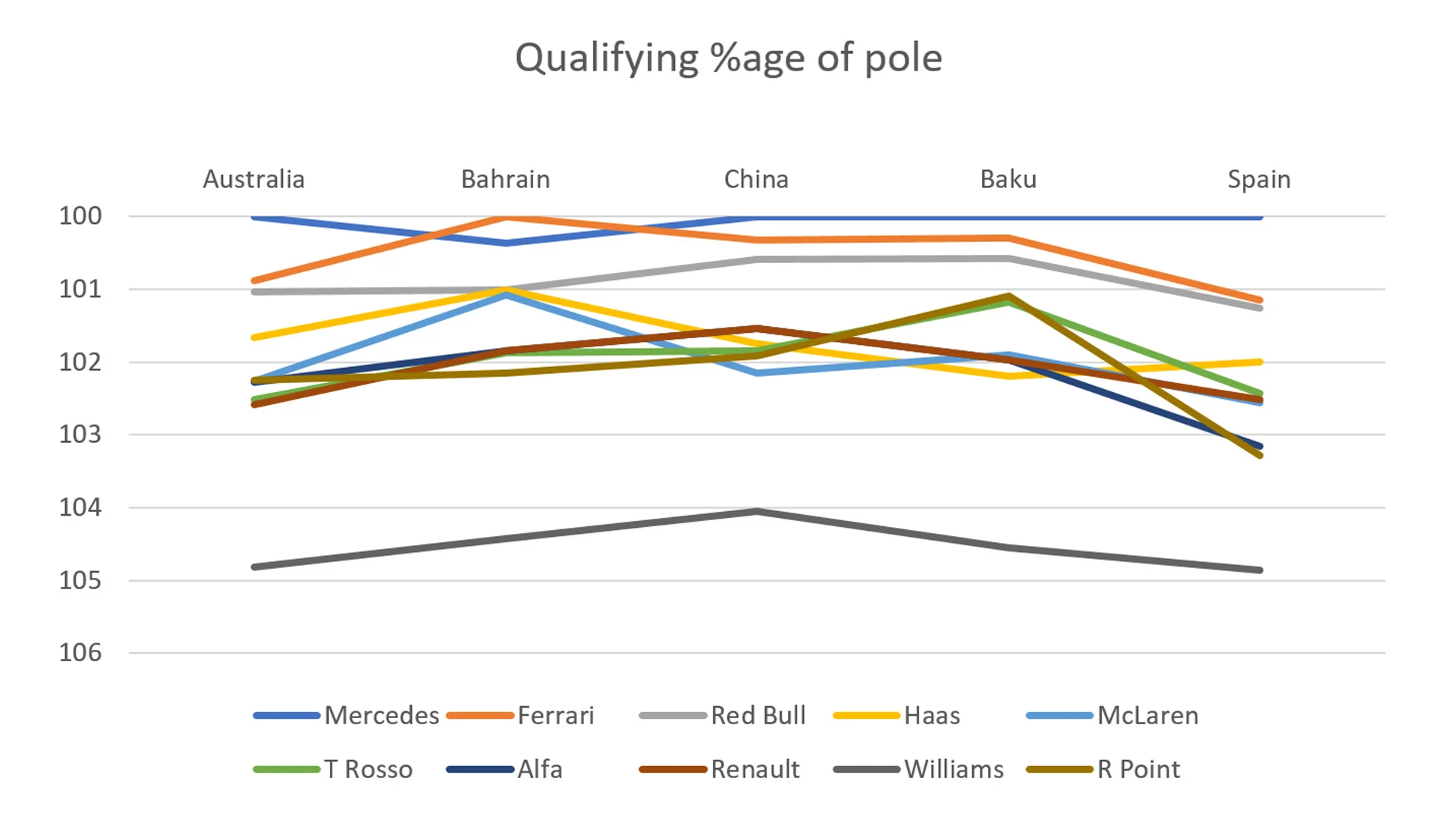
We will look first at what circuit features could be determining Mercedes' increased gap over the field. Then we will take a look at the specific upgrades.
Circuit Sensitivities
The four main lap time-determining factors are downforce, drag, horsepower and tyre grip. Each track differs in how much reward it gives to improvements in each of those performance factors. These are termed ‘circuit sensitivities’.
In terms of downforce, Barcelona is not particularly sensitive relative to other tracks. Of the tracks visited so far, only Baku is less sensitive. Shanghai is, in fact, the most downforce-sensitive track on the calendar. In other words, a downforce advantage there will pay back more lap time in China than in Spain.
Of all the tracks on the calendar, Monza has the greatest sensitivity to a reduction in drag. But of the tracks so far visited, the most drag-sensitive is Baku – which is 50% more sensitive to a reduction in drag than Barcelona, which ranks only 16th on the 21 circuits on the calendar. Bahrain is 40% more sensitive than Barcelona to drag.
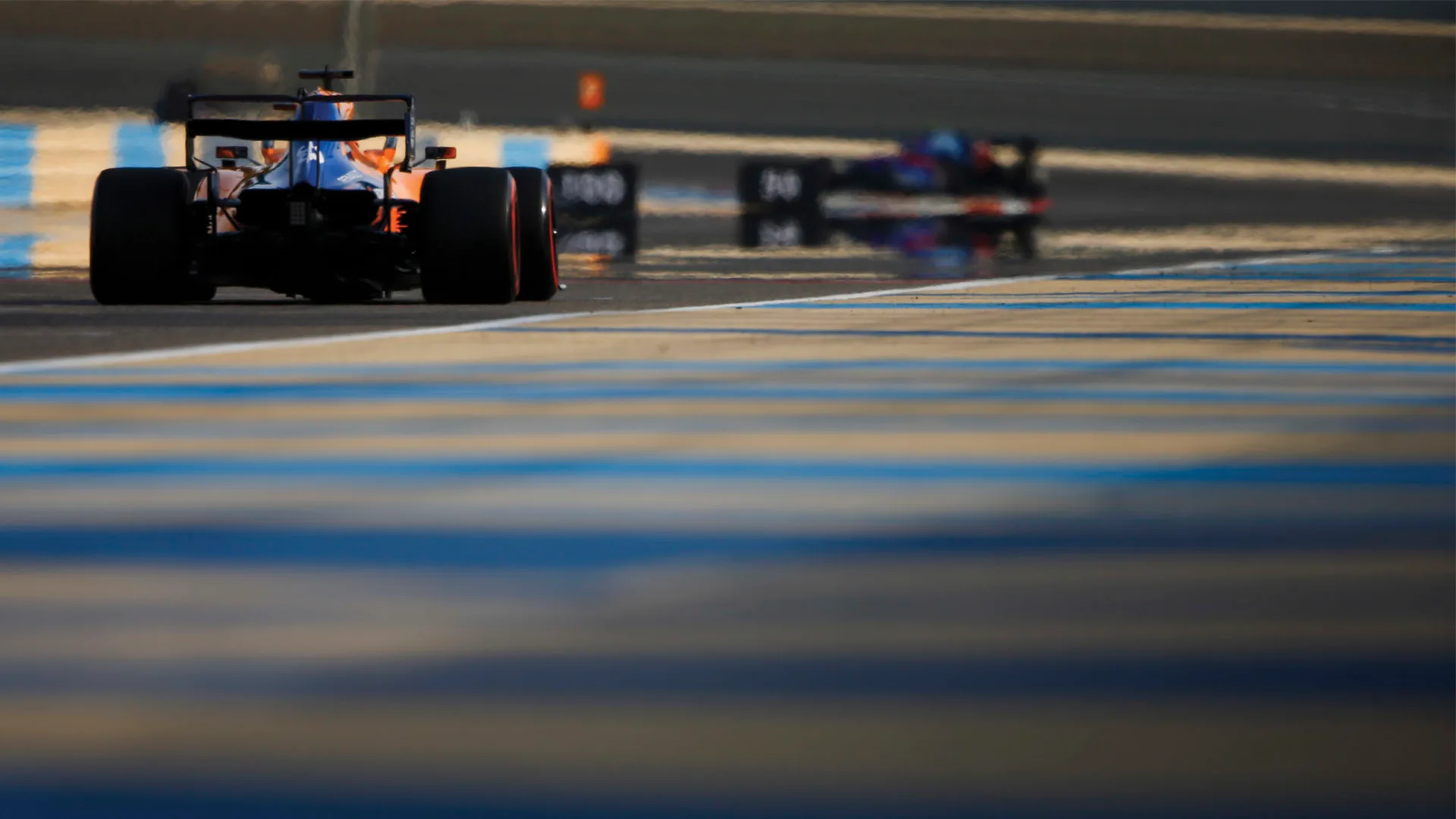
Baku is the most power-sensitive track on the calendar, with Spain the least sensitive of all those so far visited, 43% less so than Baku. Bahrain ranks closely behind Baku in power sensitivity.
In terms of tyre grip, Shanghai is the most sensitive of the tracks so far visited, equal second over the full season, with Bahrain ranking seventh, Barcelona eighth, Baku ninth and Melbourne 13th.
What does that tell us? That around Barcelona the Ferrari’s engine power advantage (in high power modes, such as in qualifying) will have nowhere near as much benefit to lap time as at Baku and Bahrain (the two tracks where Ferrari showed Mercedes-beating pace). It also suggests that the Ferrari’s lower drag will have been of much more benefit at Baku and Bahrain than at Barcelona.
So, relative to Ferrari, Merc’s increased margin in Spain was quite circuit-specific. Although Mercedes increased their margin over pretty much everyone, their increase over Ferrari was greater than over any team other than Racing Point (see graph). But the circuit sensitivities explain only part of it. The rest of it was the power of Mercedes' upgrade.
Upgrades
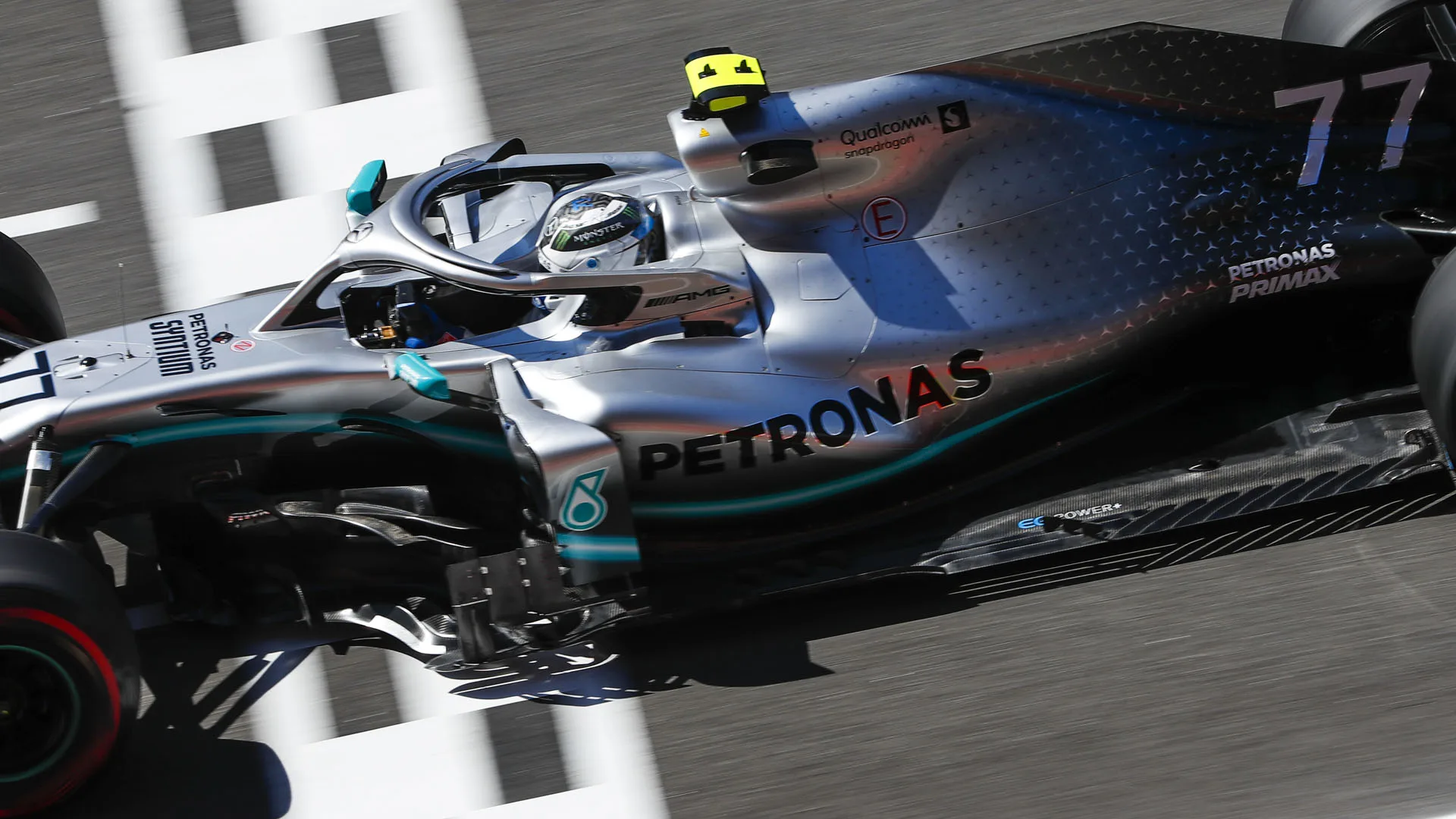
The Mercedes barge board featured three closely-bunched vortex generators where before there was one. The vortices these trigger will increase the speed of the airflow over the body surfaces down the side of the car as it makes its way to the gap between the rear wheel and over the top of the diffuser and thereby pulling harder on the airflow exiting the diffuser from the underfloor. The faster this flow can be made to travel, the greater force with which it will pull down upon the car.
But if three is better than one, why was there only one before? It’s all about manipulating air pressures to induce the speeding up of the flow – and there is only so much energy with which to induce the pressure changes. Without somehow freeing up the route of the airflow (either before or after the barge boards), then adding more vortices would simply increase the drag without a net increase in airflow speed (and therefore downforce). The changes to Mercedes’ front wing, with a small cut-out on the second flap at the inboard end, will almost certainly be related to the different barge board arrangement playing its part in freeing up the route of that airflow that has allowed greater vortex generation.
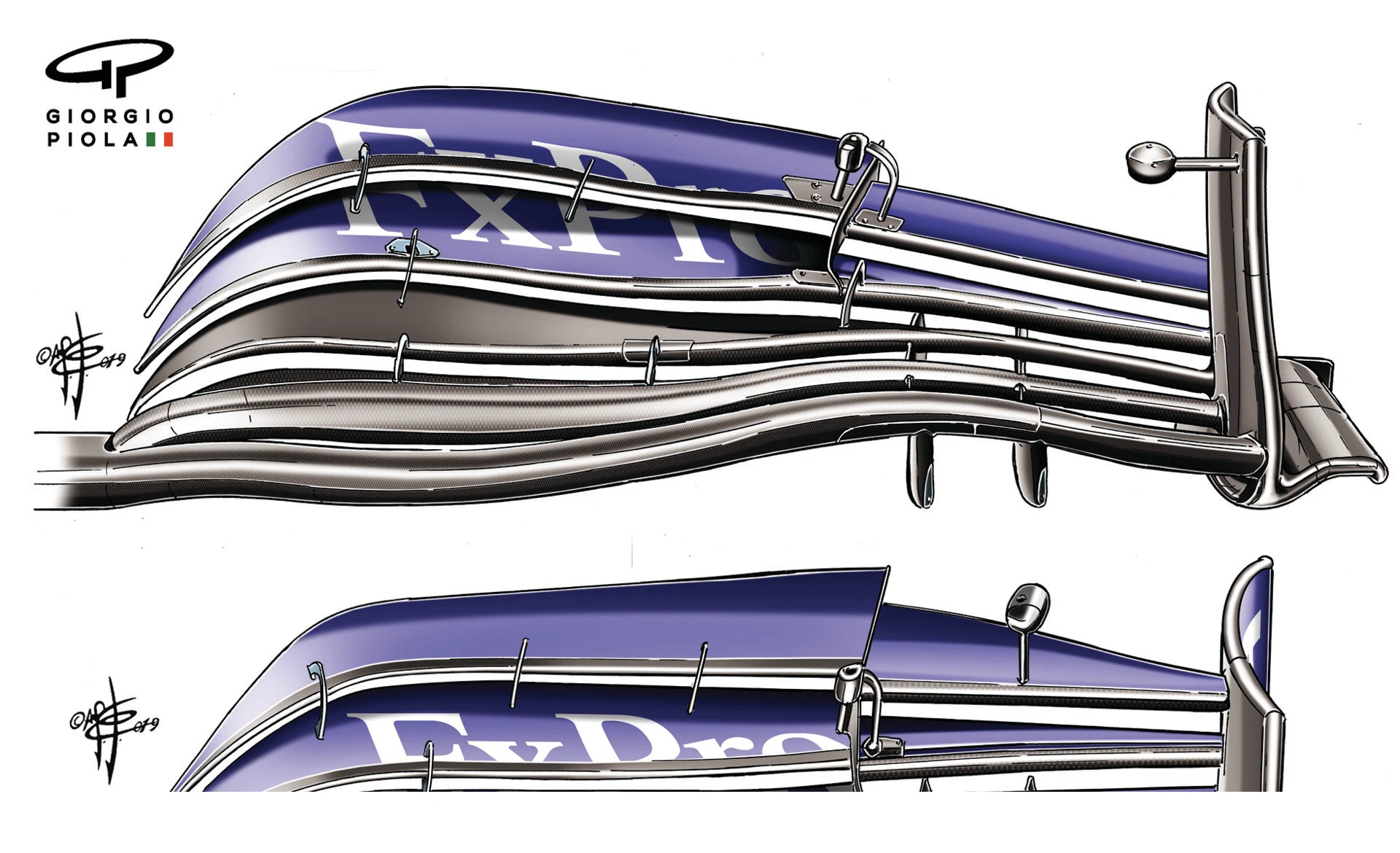
Aside from Mercedes', perhaps the most visually obvious upgrade of the Barcelona weekend was McLaren’s new front wing, pictured above. This moved towards the Ferrari philosophy of bunching the outboard ends of the elements closer together and not using up the full width permitted. Instead, the inboard ends rise up more aggressively. This changes the priority between out-washing flow around the tyre and keeping it from interfering with the flow going down the body sides.
This change would suggest a greater emphasis on the outwash, with less energy than before going through the gap inboard of the tyre (i.e. between the nose and the tyre). McLaren’s new barge board will be reflective of these changes in priority.
Next Up
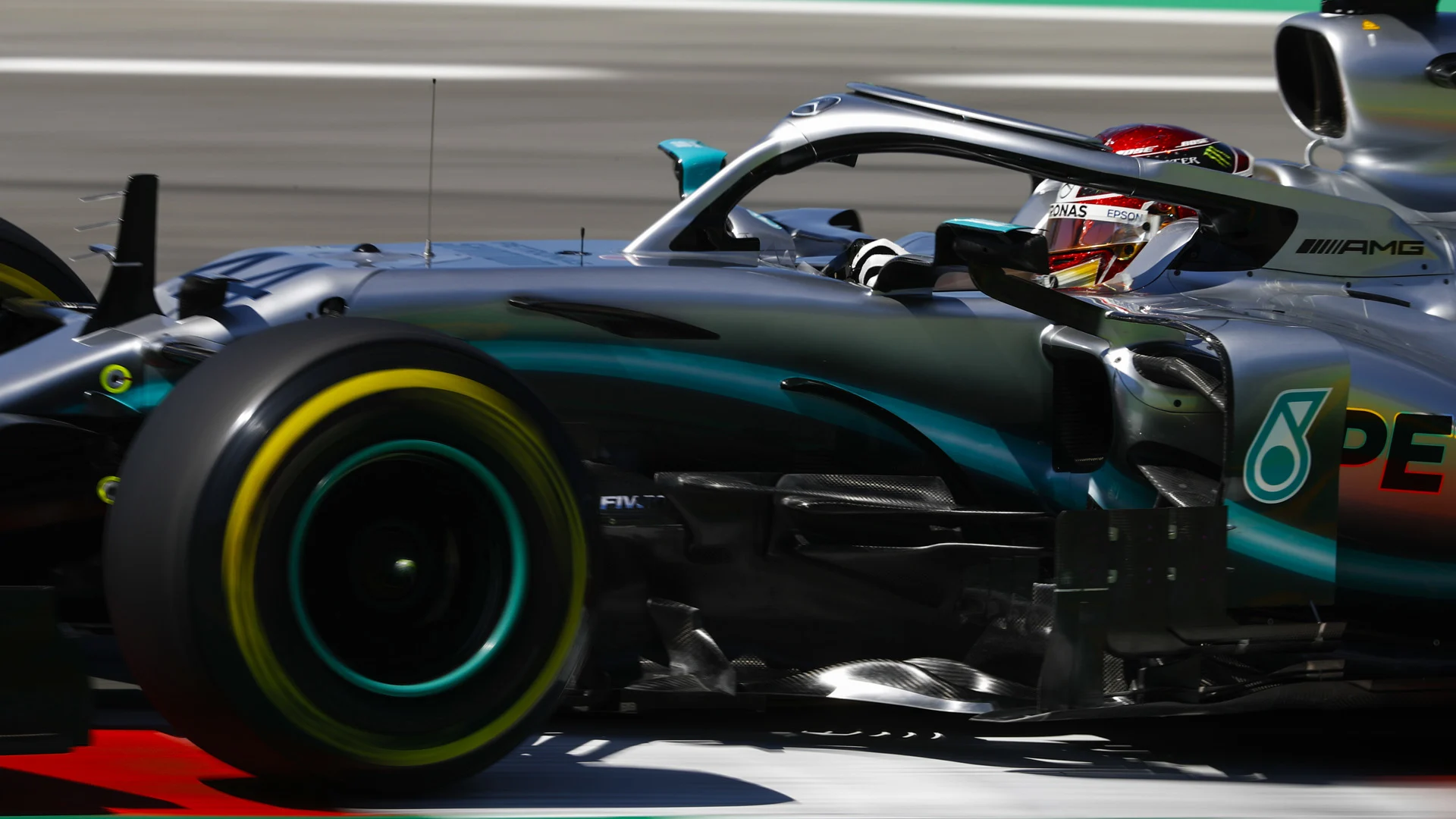

.webp)
.webp)


